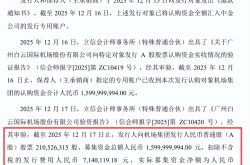Behind the 'mad rush' of 5G mobile phones, the market elimination race accelerates
![]() 09/27 2024
09/27 2024
![]() 669
669
As the mobile phone market gradually becomes saturated, consumers' awareness and loyalty to brands continue to improve, making the living space for small and medium-sized manufacturers increasingly narrow.
Blue Whale News, September 26 (Reporter Zhai Zhichao) In the first eight months of this year, the domestic mobile phone market delivered an impressive answer sheet, with 5G mobile phones showing the most rapid growth momentum.
According to data from the China Academy of Information and Communications Technology, from January to August, the total shipment of mobile phones in the domestic market reached 195 million units, a year-on-year increase of 16.6%. Among them, the cumulative shipment of 5G mobile phones was 165 million units, a year-on-year increase of 23.9%, accounting for 84.5% of the total mobile phone shipments during the same period.
Judging from the above data, consumers' demand for 5G mobile phones is constantly increasing, and they are willing to purchase 5G mobile phones to obtain a better network experience and smoother application experience. At the same time, the growth of 5G mobile phones has also driven the growth of the entire mobile phone market, highlighting the important role of 5G technology in promoting the development of the smart phone market.
It is worth noting that while shipments of mobile phones in the domestic market have surged, the number of newly launched models has declined.
According to data from the China Academy of Information and Communications Technology, 47 new mobile phone models were launched in China in August, a year-on-year decrease of 14.5%, of which 29 were 5G mobile phones, a year-on-year decrease of 3.3%, accounting for 61.7% of the total number of new mobile phone models launched during the same period. From January to August, 281 new mobile phone models were launched in China, a year-on-year decrease of 4.1%.
Surge in shipments of 5G mobile phones
Since 2024, the proportion of 5G mobile phones shipped in the domestic market has increased significantly, becoming the core driving force for market growth.
Blue Whale News reporters noticed that the rapid growth in 5G mobile phone sales is by no means accidental, and it is the result of multiple factors intertwined behind it.
Firstly, the accelerated construction of 5G networks has laid a solid foundation for the development of 5G mobile phones. In recent years, the number of 5G base stations in China has continued to climb, and coverage has continued to expand. As of now, the total number of 5G base stations nationwide has exceeded millions, and 5G networks have covered most cities and regions. With good 5G network coverage, consumers can enjoy high-speed Internet access, smooth video playback, low-latency gaming, and other high-quality experiences in more areas.
At the same time, the active planning and layout of mobile phone manufacturers are also an important driving force for the rapid growth of 5G mobile phones. It is reported that since the commercialization of 5G networks, major mobile phone manufacturers have made 5G mobile phones the top priority in product research and development and promotion. In recent years, they have continued to enrich the categories of 5G mobile phones, with an increasing number of 5G mobile phones being launched from high-end flagship markets to mid-to-low-end markets, in terms of price and function.
Meanwhile, the upgrading of consumer demand has injected continuous momentum into the growth of 5G mobile phones. With the continuous advancement of technology and the improvement of living standards, consumers' demand for mobile phones continues to escalate. 5G mobile phones happen to meet consumers' needs for high-speed networks, powerful performance, and rich functions. For example, applications such as Augmented Reality (AR), Virtual Reality (VR), and the Internet of Things (IoT) can better function under 5G networks, providing users with more functional value.
It is worth mentioning that consumers' phone replacement cycle has also contributed to the growth of 5G mobile phones to a certain extent. Research reports show that with the continuous iteration of mobile phone technology, consumers typically replace their phones every 2 to 3 years.
Profound changes are taking place in the market
Behind these changes in data, they may also indicate that profound changes are taking place in the market.
Midstream mobile phone manufacturers face both opportunities and challenges in the process of shipment growth. They need to expand production scale, increase production lines, recruit employees, and work closely with suppliers. At the same time, they need to improve production efficiency and reduce costs to maintain competitiveness. By innovating in aspects such as appearance design, functional features, and operating systems, and introducing unique designs and new technologies, they can attract consumers. In addition, brand building and marketing are also crucial, requiring various ways to improve brand awareness and reputation, and formulating personalized marketing strategies.
The downstream sales and service links also play an important role in shipment growth. Sales channel providers welcome more sales opportunities and need to strengthen cooperation with mobile phone manufacturers, improve sales service levels, and provide consumers with a convenient shopping experience. After-sales service providers face greater pressure. With the increase in shipments, after-sales service demand is also growing, and they need to strengthen the construction of after-sales service networks and improve response speed and quality.
Profound changes are taking place in the mobile phone market, and so is the mobile phone industry chain.
With the growth in mobile phone shipments, upstream component suppliers play a critical role. Chip manufacturers have increased R&D investment in response to the requirements of 5G technology popularization and mobile phone performance enhancement, and have launched advanced chip solutions, effectively supporting the operating speed and emerging applications of mobile phones.
Screen suppliers continue to innovate, with high resolution, high refresh rate, and OLED, AMOLED technologies providing users with an excellent visual experience. The maturity of folding screen technology has added new highlights to the market. Camera module suppliers continue to improve product quality, with higher-pixel cameras, multi-camera systems, and advanced image processing algorithms making mobile phone photography capabilities increasingly powerful. Battery suppliers actively improve technology to meet the demand for long battery life and fast charging in mobile phones.
Pressure mounts on small and medium-sized mobile phone manufacturers
While profound changes in the mobile phone industry bring opportunities, they also pose challenges for some small and medium-sized mobile phone manufacturers.
As we all know, leading mobile phone manufacturers have continuously expanded their market share by leveraging their strong brand influence, solid technological research and development capabilities, and excellent supply chain management capabilities. They have significant advantages in product design, performance optimization, and user experience, allowing them to attract many consumers.
For example, brands such as Apple and Huawei occupy an important position in the high-end market, known for their outstanding performance, smooth operating systems, and excellent camera functions. Brands such as Xiaomi, OPPO, and vivo have performed strongly in the mid-to-low-end market, winning over consumers with cost-effective products and extensive sales channels.
In addition, leading manufacturers have more abundant capital and human resources, allowing them to invest more resources in product research and development and marketing. They pay more attention to product iteration and optimization rather than frequently launching new models. For example, Apple typically launches a new iPhone series once a year, continuously improving product performance and user experience through ongoing improvements to its existing product lines. Huawei is also continuously optimizing its Mate and P series phones, strengthening its technological advantages in photography, communications, and other fields. This strategic adjustment enables leading manufacturers to better meet consumer demand while reducing R&D and production costs.
In contrast, small and medium-sized mobile phone manufacturers face many difficulties. Firstly, their market share continues to be squeezed. Small and medium-sized manufacturers are at a disadvantage in terms of brand awareness, technological capabilities, and supply chain management, making it difficult for them to compete with leading manufacturers. As the mobile phone market gradually becomes saturated, consumers' awareness and loyalty to brands continue to improve, making the living space for small and medium-sized manufacturers increasingly narrow.
Secondly, small and medium-sized manufacturers have limited R&D capabilities. Constrained by capital and technological capabilities, they struggle to bear the costs and risks of frequently launching new models and can only make minor improvements and innovations based on existing technologies. At the same time, they also face significant difficulties in supply chain management, making it challenging to obtain high-quality components and production resources, further affecting their ability to launch new models.
Furthermore, market positioning is challenging. Small and medium-sized manufacturers struggle to compete with leading manufacturers in the high-end market and face fierce competition from other small and medium-sized manufacturers in the mid-to-low-end market. In this context, it is difficult for them to find a clear market positioning and launch new models with differentiated competitive advantages.





